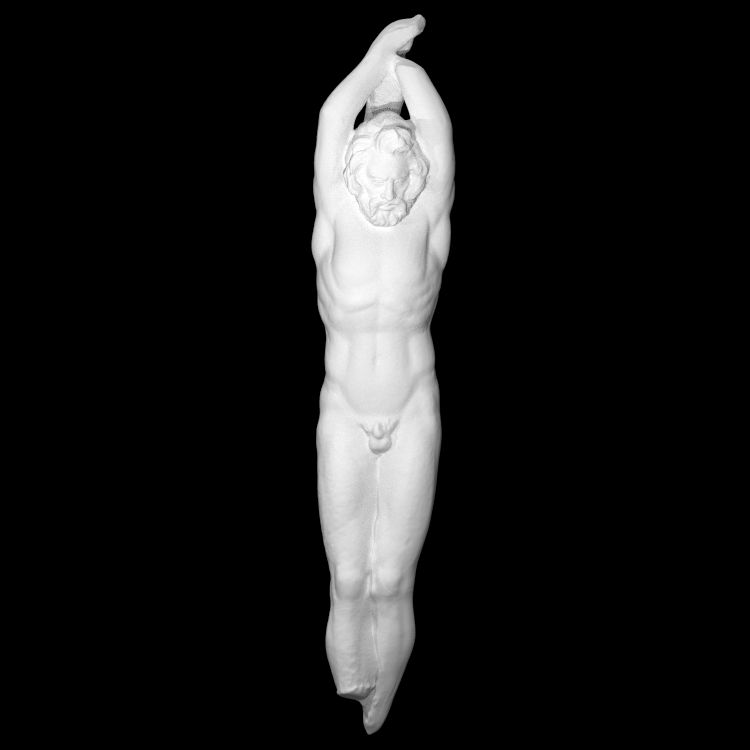
Vignacce Marsyas
myminifactory
The mythological gods tell of how one day Athena crafted a double flute from a stag's bones and played it at a divine banquet, captivating the gods with her music. Hera and Aphrodite, however, ridiculed Athena's comical appearance when she puffed out her cheeks to play her new instrument. Enraged, Athena discarded the flute, placing a curse on anyone who might pick it up. The satyr Marsyas discovered the flute, becoming unwittingly entangled in the goddess's curse. As a follower of Cybele, he wandered through Phrygia's woods playing the flute with such skill that he believed he could challenge Apollo and his lyre. A contest took place, with the Muses serving as judges. It was agreed that the winner would impose their will on the loser. The contest ended in a tie until Apollo turned his lyre upside down, challenging Marsyas to play and sing simultaneously. This being impossible for a flute player, Apollo was declared the winner and exacted a cruel revenge on the satyr who dared challenge him: he hung Marsyas from a tree and flayed him alive. Blood flowed from every part of Marsyas's body as his muscles, veins, and pulsing bowels were exposed. The satyrs and nymphs mourned his loss for a long time, and their tears fed a river in Phrygia known as the Marsyas. Most scholars agree that the Hanging Marsyas iconography originated in Pergamon, Asia Minor. In this region, during the Hellenistic period (between the late third and early second century BC), artists created and elaborated upon a sculptural group featuring Apollo, Marsyas hanging from the tree, and the Scythian slave who flayed him. A statue depicting the Hanging Marsyas was discovered in July 2009 during an archaeological excavation campaign at the side of an ancient Roman villa known as the Villa delle Vignacce - Villa of the Vineyards - located in Rome's Park of the Aqueducts. The villa stood on the south side of the Via Latina, belonging to Quintus Servilius Pudens, a wealthy brick manufacturer and friend of Emperor Hadrian (117-138 AD). His business operated from 123 AD, if not earlier, and continued until the end of Hadrian's reign; his bricks were used to build the emperor's villa in Tivoli. The statue was carved from a single block of reddish-purple-veiled marble originating from Asia Minor. Its feet and left hand were not found but were likely made of white marble like the right hand. The eyeballs are crafted from white limestone, with irises made of glass paste; the contours of the eyes and lashes are in bronze. Traces of red ocher were discovered on the tree trunk, probably painted red due to the veiling of the stone block being paler there. Very small traces of vermilion were found at the corners of the mouth and eyes. The discovery of this statue is especially significant as it broadens our understanding of the Hanging Marsyas iconography and adds to our knowledge of artworks created by a group of sculptors from Aphrodisias in Caria (Asia Minor) during Hadrian's reign. Moreover, finding this statue in a known residential complex belonging to Q. Servilius Pudens under Hadrian enables us to establish hypothetical but plausible links between the Vignacce Marsyas and three statues found at Hadrian's Villa in Tivoli - the two Centaurs in bigio morato marble signed by Ariseas and Papias, and the Drunken Faun in rosso antico marble. The Vignacce statue is a sophisticated interpretation of the Hanging Marsyas. In other examples, the face is distorted and disfigured by atrocious suffering; in this one, the expression of pain does not alter the satyr's features. This different sensitivity on the sculptor's part appears quite evident when comparing this work to the Marsyas that stood in the ancient Gardens of Maecenas, whose face is convulsed and altered in its proportions, with overly pronounced frontal bosses and a contorted mouth.
With this file you will be able to print Vignacce Marsyas with your 3D printer. Click on the button and save the file on your computer to work, edit or customize your design. You can also find more 3D designs for printers on Vignacce Marsyas.
